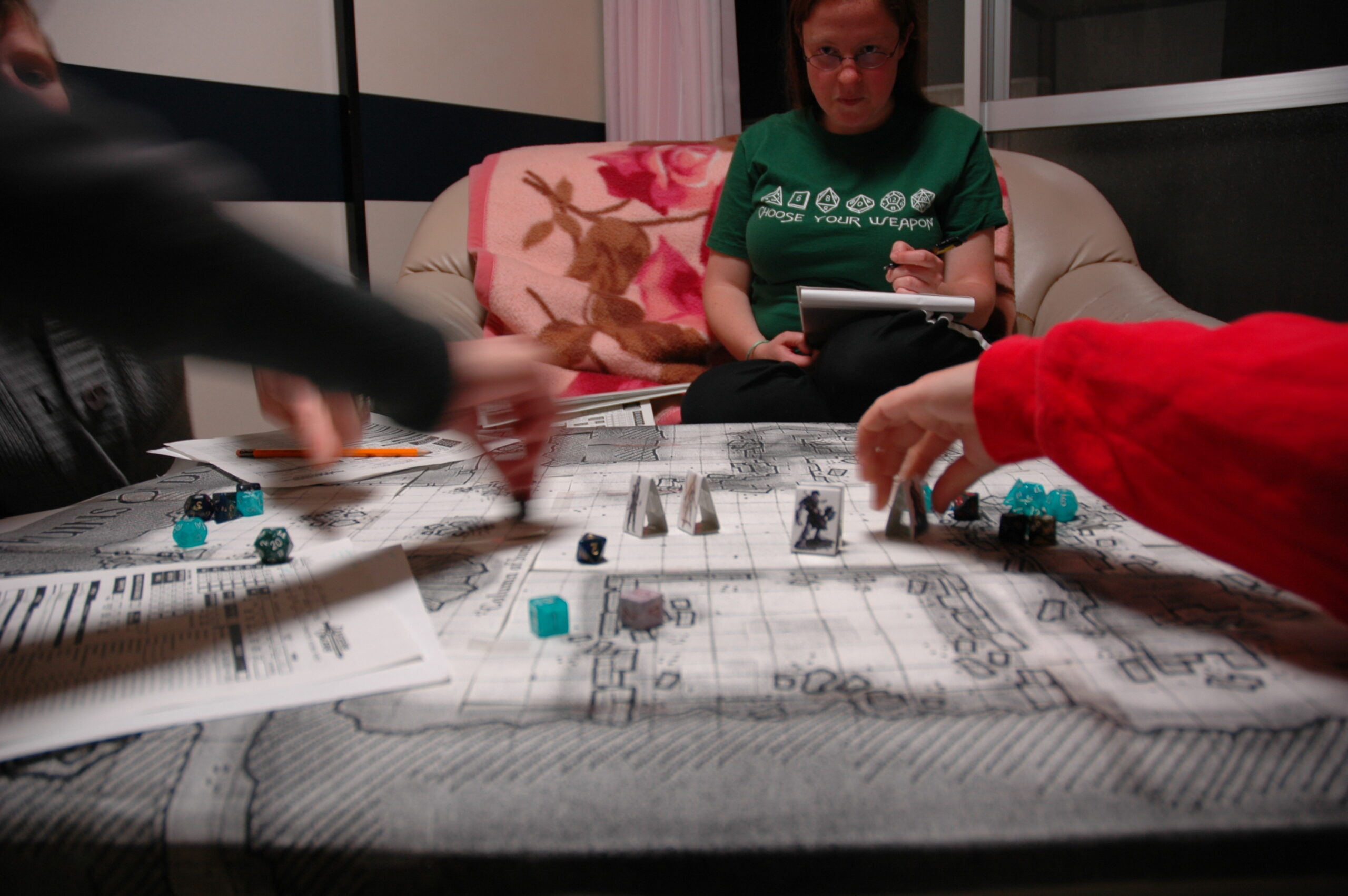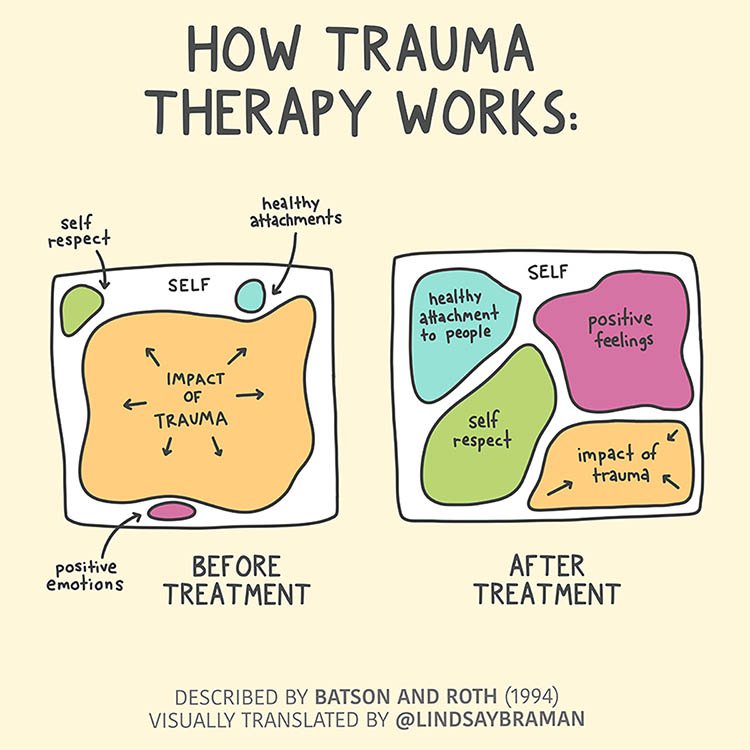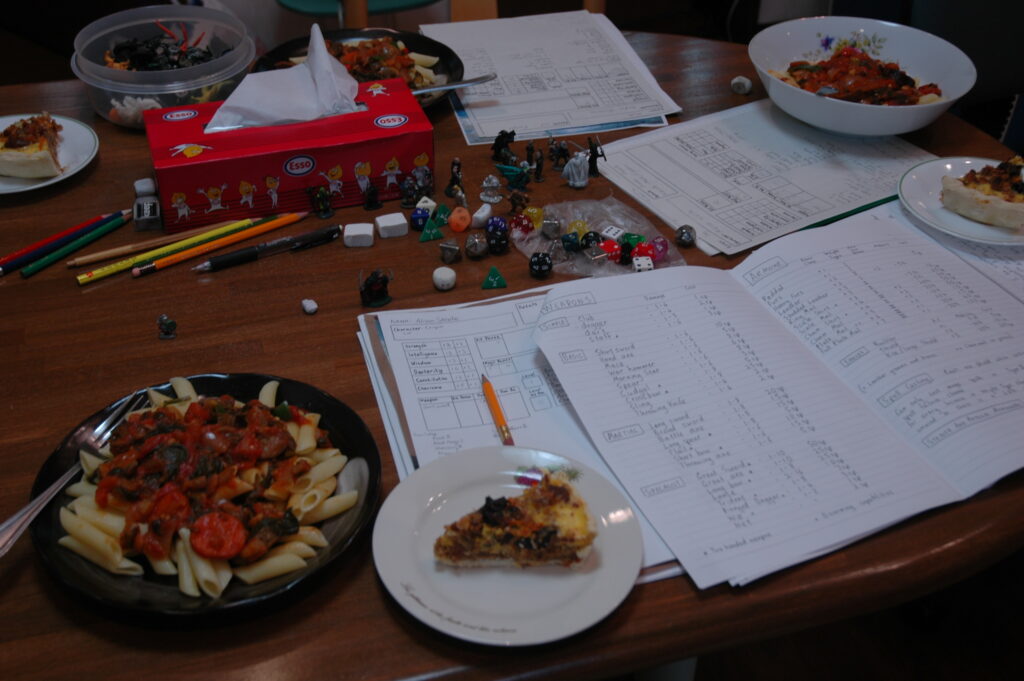Part 2 – Dungeon as Metaphor?
Over many years and several D&D campaigns, I have reluctantly become more comfortable with the concept of asking for help when I need it and letting someone else revel in a success. (During some of the sillier campaigns, I’ve also learned not to take myself so seriously.) My need for growth in these areas has become all the more apparent over the course of my career, as I have taken on more professional responsibility, and now, as I find myself running an organization, realizing that I cannot possibly do everything myself.
In last week’s post,[1] I referenced Simon Sinek’s book Leaders Eat Last,[2] in which Sinek describes the four feel-good chemicals released by the brain. Half of those chemicals require interpersonal interactions: serotonin to reinforce pride in group victories and oxytocin to cement love and trust. He tells us that oxytocin doesn’t only help us build bonds of trust, but that, by extension, it keeps us healthy and makes us better problems solvers: “leaps of greatness require the combined problem solving ability of people who trust each other.”
Growth Through Gameplay
For anyone who knows me personally, it will come as no surprise to hear me say that I am reluctant to relinquish control; Ronald Reagan’s “trust but verify” should be my personal motto. However, successful D&D campaigns rely on cooperation, collaboration, and specialization of skills among party members. While an individual may succeed at something that supports the overall goal, it is the party that wins or loses.

In my first campaign I played a hot-headed monk who ran head-first into conflict, often without thinking. She would not have survived long without relying on the cleric who frequently healed her wounds. Learning to rely on others was most definitely outside of my comfort zone, but I was able to play-test it in a safe environment. At the end of the day, it was my character who was in a tough situation, not me, but I learned her lessons just as well as she did.
Earlier this year, a friend sent me an article about how some therapists are using D&D to help kids who have trouble communicating or connecting with others, and even kids who have experienced trauma. The article and an embedded video of a panel discussion on the same subject go into detail about the benefits of using roleplaying games as a way to process emotions that are difficult to discuss.[3]
The panelists in the aforementioned video list incredible examples of how they worked through difficulties with some of the young adults in their campaigns. For example:
- Two players who always disagreed with each other and could never find consensus encountered a two-headed monster whose two heads always disagreed with each other. The players decided to help each of the monster’s heads understand the other’s perspective.
- One player with autism had difficulty with understanding social cues, changes in routine, and ambiguity. His party encountered a town of people who were brainwashed into unquestioning compliance with an arbitrary routine, and he helped them understand why spontaneity and uncertainty can be good things.
- One player with ADHD who had impulse control issues created a character with similar behavior patterns who would frequently make decisions that were detrimental to the party. The Dungeon Master / Game Master redirected the other players’ frustrations away from the player in question and to his character. Then the party worked together to solve the problem, and the player came to understand the consequences of rash actions.
Of course none of these individual situations solved an issue entirely, but they created an environment where each player could begin to explore new approaches to difficult situations by way of his character.[4]

Image credit: [5]
The goal of these groups is to reinforce healthy and positive social interaction, giving the players constructive ways to process their emotions and venture outside their comfort zones under the auspices of being in character. The examples described in the video illustrate children building teamwork skills and communication skills, as well as gaining empathy for others and understanding for others’ perspectives. One therapist described performing a “check-out” at the end of every session, in which players would talk about what they felt, what they learned, and how they wanted to grow in the future.
Physiological Responses to Stress
I was surprised to learn that therapeutic Role-Playing Game therapy has been around for several years, and it is becoming more popular with researchers and therapists working with a range of troubled teens,[6] including violent offenders in juvenile detention facilities, who have often experienced childhood trauma. A few weeks ago on this blog, I discussed how chronic stress and trauma are held in the body unless they are processed, which can be done through physical activity, deep breathing, positive interactions with other humans, and creative expression (to name a few).[7] This novel but productive way of working through trauma has multiple long-term psychological and physiological benefits.
In the book The Body Keeps the Score,[8] author Bessel van der Kolk describes how unprocessed trauma can manifest in the body, increasing risk of diabetes, heart disease, and possibly cancer.[9] There are negative impacts on the brain as well. Specifically noted in people suffering from post-traumatic stress disorder are the following responses: “the hippocampus shrinks — this is the centre for emotion and memory; the amygdala function increases — the centre for creativity and rumination; and the prefrontal/ anterior cingulate function decreases — the centre for more complex functions like planning and self-development.” The good news is that processing past trauma allows the brain to heal.[10]

We all know that 2020 has been a hell of a year, and that we are all most likely dealing with some kind of chronic stress, possibly peppered with acute traumatic events. Fortunately, there are things we can do to help process that stress, and embracing an outlet for creativity with other humans checks several boxes. Human interaction is difficult in the time of a global pandemic, but we have a tool at our disposal that wasn’t available in 1918… or when I lived in Japan, for that matter.
Video conferencing technology, though certainly not the same as sitting around a table together and sharing a bag of Cheetos, is beginning to seem like a boon as we move into the winter months. It has been several years since I’ve made the time to play D&D with friends, but given the implications of this research, I may go dust off my dice and try to get through this dark patch with some support.
~
Are you a fan of D&D or other role-playing games? Have you noticed any specific emotional or physical benefits from playing? I would love to hear your stories below.
Thank you for reading!
[1] https://radicalmoderate.online/dungeons-dragons-as-group-therapy-part-1/
[2] https://www.goodreads.com/book/show/16144853-leaders-eat-last
[3] https://kotaku.com/therapists-are-using-dungeons-dragons-to-get-kids-to-1794806159
[4] https://youtu.be/z_iD-R3lVhY
[5] https://lindsaybraman.com/trauma-therapy-recovery/
[7] https://radicalmoderate.online/dont-fear-the-reaper-processing-tragedy-through-art/
[8] https://www.goodreads.com/book/show/18693771-the-body-keeps-the-score
[9] https://www.newscientist.com/article/mg22429941-200-the-lifelong-cost-of-burying-our-traumatic-experiences/
[10] https://medium.com/@biobeats/how-unprocessed-trauma-is-stored-in-the-body-10222a76cbad
1 Comment
Hindsight is 2020, Part 2 – Finding Balance – Radical Moderate · January 3, 2021 at 10:05 am
[…] [10] https://radicalmoderate.online/dont-fear-the-reaper-processing-tragedy-through-art/ […]